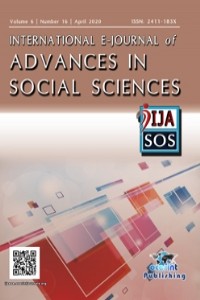Abstract
In this paper, the images of the sun and the moon, which are the prototype of the spiritual world in Chuvash mythopoetic literature, are considered. The reflection of the concept of these heavenly bodies in classical Chuvash literature is also studied. The main attention is paid to the study of the sun role in K. Ivanov's poem "Narspi", where this concept acts as an image of the Almighty.
In Chuvash literary studies, many works are devoted to the study of literary traditions and artistic images originating from ancient times. The purpose of this study is to consider the concept of the sun and the moon in the context of the Turkic artistic tradition. This topic is relevant, as the study of deep connections of different peoples’ mythopoetic literature helps to understand better both the work of individual authors and artistic trends in literature as a whole.
One of the Turkic literary traditions is the cult of the sun and the moon, which is associated with the folklore aesthetic views of these peoples. Cultivation of these images is observed in the literature of the Turkic peoples from the earliest period. The cult of the sun and the moon image was preserved in Chuvash literature.
The Chuvash have many myths where the sun and the moon were originally inseparable. Then they were separated by fate. In the myths of the moon and the sun, the animalistic worldview of the Chuvash ancestors is observed. These heavenly bodies are certain substances that are set to serve humanity. In the traditional culture of the people, they are perceived as living beings with human qualities: kindness, mercy, modesty, fatigue, etc. In Chuvash literature, the unity of the sun and the moon personify warmth and light.
The ancient Chuvash revered the sun and believed that it was impossible to speak badly of it, because it sees and hears everything. It was also a symbol of justice and prosperity in their lives. In folklore, the sun is deified. Although the moon, being its younger brother, does not play the role of a deity, but it is also a benefactor and helper of people living on earth.
Undoubtedly, the cult of the sun and the moon, having arisen at the dawn of mankind with the advent of the first religious beliefs, penetrated into the Turkic environment. The veneration of these heavenly bodies was being cultivated by the Chuvash ancestors for several centuries and, of course, a transformation took place. However, this tradition has been preserved in Chuvash folk literature, and the veneration of the sun and the moon was later reflected in classical Chuvash literature.
In the poem "Narspi" by K.V. Ivanov the sun is a kind of unique substance, which acts as a higher power, evaluating the events taking place in the poem. The sun in the poem is not just a symbol-epithet, but one of the acting heroes, which sometimes replaces the image of the narrator, condemns the actions of some heroes, sympathizes with others, and evaluates the third ones.
Mention of the sun image is present at the very beginning of the work and at its end. The work begins with a description of the origin of life in the spring and ends with the death of the main character. One circle of human life closes. But time and the universe are eternal. The constancy of traditions, the natural world is transmitted through the image of the sun, which will move along its trajectory further. Thus, we have revealed that the Chuvash poet K.V. Ivanov turned to the cult images of the sun and the moon, developing them to poetic symbols.
Keywords
General Turkic literary traditions, , the cult of the sun and moon, Chuvash myths and legends, the poem “Narspi”, Konstantin Ivanov, literary images.
References
- Yakimova (Afanas'eva) E.R. The genre of historical tragedy in the Volga region dramaturgy // Philological sciences. Questions of theory and practice. 2016. No. 6-1 (60). P. 62–64.
- Yakimova E.R. Artistic mythologism in modern Chuvash drama // Ashmarin readings: collection. materials XI Int. scientific and practical. conf. Cheboksary, 2019. P. 133-136.
Abstract
References
- Yakimova (Afanas'eva) E.R. The genre of historical tragedy in the Volga region dramaturgy // Philological sciences. Questions of theory and practice. 2016. No. 6-1 (60). P. 62–64.
- Yakimova E.R. Artistic mythologism in modern Chuvash drama // Ashmarin readings: collection. materials XI Int. scientific and practical. conf. Cheboksary, 2019. P. 133-136.
Details
| Primary Language | English |
|---|---|
| Journal Section | Research Article |
| Authors | |
| Publication Date | September 10, 2020 |
| Submission Date | March 10, 2020 |
| Published in Issue | Year 2020 Volume: 6 Issue: 16 |
Contact: ijasosjournal@hotmail.com
The IJASOS Journal's site and its metadata are licensed under CC BY
Published and Sponsored by OCERINT International © 2015- 2025

